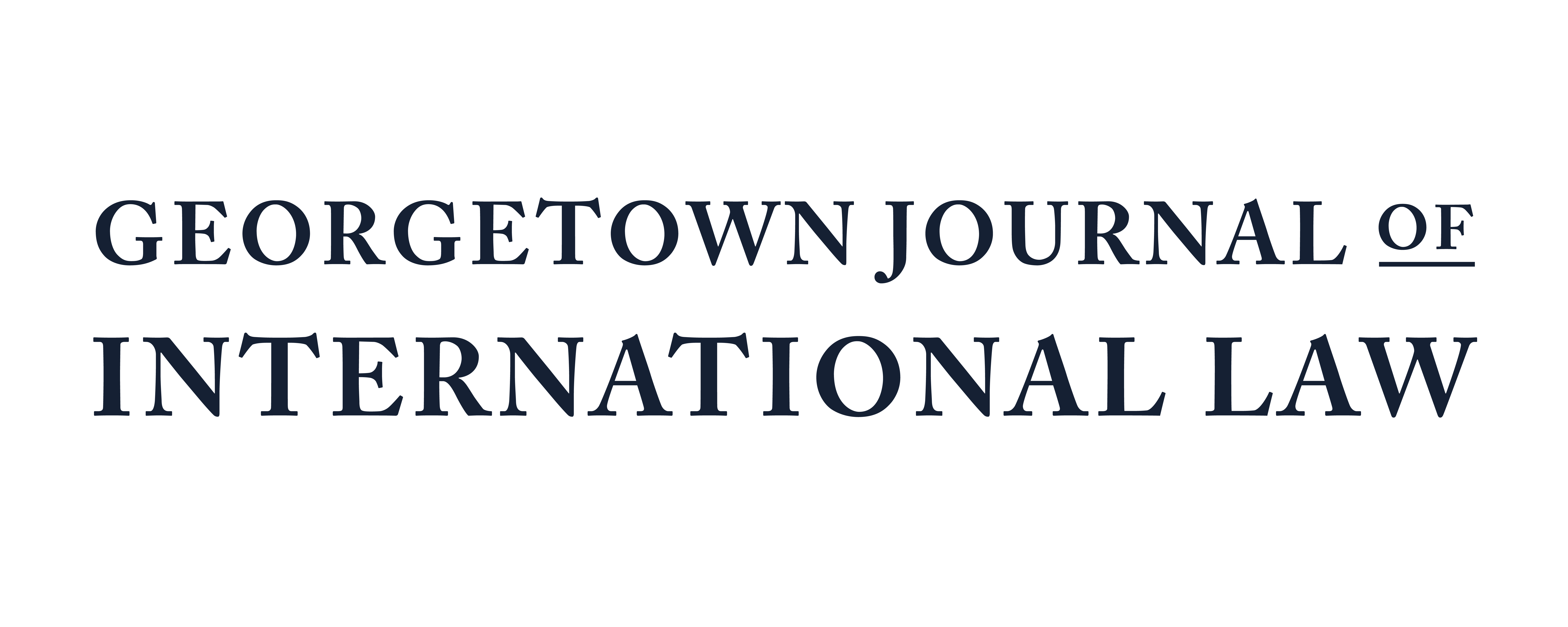From Tax Filter to Fiscal Dialogue: Rethinking the Referral Mechanism in Investor-State Dispute Settlement (“ISDS”)
October 3, 2025 by Iacopo Andrea Accolla

The intersection of taxation and investment protection has emerged as a contested dimension in investment arbitration. Tax carve-outs are a common way in which modern International Investment Agreements regulate the treatment of taxation, and some of them retain a “referral” or “filter” mechanism that grants tax authorities a gatekeeping role before arbitration may proceed. In practice, however, this mechanism has often proven ineffective. This commentary argues that it is time to reconsider the referral mechanism and explores mediation as a more balanced, transparent, and effective alternative.
In recent years, a growing number of countries have adopted diverse policy approaches to regulate the interaction between tax measures and investment protection in International Investment Agreements (IIAs). A limited number of states have opted to entirely exclude tax measures from treaty coverage, primarily to safeguard their tax sovereignty. However, the vast majority of treaties take a more nuanced approach. They either incorporate partial carve-outs, excluding only specific standards of protection, or establish a general exclusion of taxation from treaty coverage while simultaneously clawing back tax measures into the scope of certain substantive protections.
Within this framework, some IIAs introduce a procedural safeguard requiring investors intending to bring a tax-related claim to notify the competent tax authority of the host state. This mechanism, often referred to as the tax referral, tax filter, or tax veto mechanism, has become a common feature of modern investment treaties, particularly in conjunction with sophisticated tax carve-out provisions. Designed to preserve fiscal sovereignty and preempt frivolous tax-related claims, the mechanism grants competent tax authorities of both the host and home States of these treaties a “gatekeeping” role. In practice, it requires that disputes involving taxation measures first be referred to the competent tax authorities of both the investor’s home State and the host State before the arbitration claim may proceed.
Although usually limited to expropriation claims, the mechanism’s scope can vary in treaty practice to address further jurisdictional questions, such as whether a measure qualifies as a taxation measure, whether it breaches specific investment protection obligations, or whether it is inconsistent with an applicable double tax treaty (DTTs).
The tax referral mechanism was first introduced by the North American Free Trade Agreement (NAFTA) and has since become a hallmark of treaties negotiated by the United States and Canada, appearing in virtually all of their post-NAFTA Bilateral Investment Treaties (BITs) and Free Trade Agreements (FTAs). It also features in several multilateral agreements, including the Energy Charter Treaty (ECT) and, more recently, the Comprehensive Economic and Trade Agreement (CETA) and the United States–Mexico–Canada Agreement (USMCA).
An illustrative example of the referral mechanism is found in Article 21(2) of the 2012 U.S. Model BIT, which conditions the investor’s access to arbitration on prior consultation between the relevant tax authorities. It provides:
“Article 6 [Expropriation] shall apply to all taxation measures, except that a claimant that asserts that a taxation measure involves an expropriation may submit a claim to arbitration under Section B only if:
(a) the claimant has first referred to the competent tax authorities of both Parties in writing the issue of whether that taxation measure involves an expropriation; and
(b) within 180 days after the date of such referral, the competent tax authorities of both Parties fail to agree that the taxation measure is not an expropriation.”
The Referral Mechanism in ISDS Case Law
Despite its inclusion in several IIAs, the tax referral mechanism has achieved limited practical success. In most cases where a referral was made—such as Cargill v. Mexico, Feldman v. Mexico, and EnCana v. Ecuador—the competent authorities failed to reach a joint determination. A rare exception is Gottlieb v. Canada, where the Canadian and U.S. tax authorities jointly concluded that the contested measure did not constitute expropriation. However, this decision was communicated through a brief exchange of letters, which lacked further clarification or any opportunity for investor participation.
In Yukos, the tax filter mechanism under Article 21(5)(b) ECT was central to the jurisdictional debate. Respondent argued that the tribunal lacked jurisdiction to assess expropriation claims under Article 13 ECT because the dispute had not been referred to the competent tax authorities, as required by the treaty. The tribunal held that the massive scale and complexity of the dispute made it inconceivable that the issues could be reduced into a form suitable for timely or meaningful review by tax authorities. Moreover, a good faith interpretation of the referral mechanism under Article 21(5)(b) of the ECT implies that referral cannot be required, where the procedure would be futile, in the specific circumstances of the case.
In Eiser v. Spain, the tribunal closely examined the referral mechanism under Article 21(5)(b) ECT. It considered whether the claimants’ letters were addressed to the proper “Competent Tax Authority” under the applicable DTTs and whether they substantively initiated the referral process. The tribunal found the communications inadequate: they neither mentioned the ECT nor characterized the tax as expropriatory, and they were not addressed to the authorities designated under the Spain–Luxembourg and Spain–UK treaties.
Concerns Surrounding the Tax Referral Mechanism
The referral mechanism has been the subject of considerable criticism in the scholarly debate. First, it largely excludes the investor from the process, echoing features of diplomatic protection. Although the procedure is formally initiated by the investor, it is conducted exclusively between the States, through a process that lacks transparency and often fails to result in a joint determination.
Second, the mechanism presumes that tax authorities are equipped to assess complex legal issues—such as whether a measure constitutes expropriation or qualifies as a taxation measure under an IIA—yet these determinations typically require a nuanced legal analysis (and expertise of public international law) that is better suited to arbitral tribunals. Moreover, as tribunals have recognized in Hulley Enterprise v. Russia and EnCana v. Ecuador, these jurisdictional questions are often intertwined with the merits and should not be decided prematurely by authorities lacking access to the full evidentiary record.
Third, the mechanism suffers from a lack of procedural transparency and precludes meaningful investor participation, as the process remains confined to exchanges between the States. This reintroduces political discretion into a system designed to be depoliticized, potentially exposing the investor to decisions shaped by diplomatic convenience. Given the high threshold tribunals have applied to tax-related expropriation claims and the procedural hurdles already imposed by tax carve-outs, the continued inclusion of this mechanism in IIAs gives rise to legitimate concerns regarding fairness and the effective protection of due process.
Mediation as an Alternative to the Tax Referral Mechanism
For all the reasons discussed above, the author is of the view that the filter mechanism should be reconsidered. This note, therefore, suggests mediation as an alternative to the traditional tax referral mechanism in investment treaty disputes. Mediation preserves investor participation, enhances procedural fairness, and facilitates the early resolution of tax-related disputes. Rather than replacing arbitration, mediation can serve as a preliminary, good-faith engagement phase—a procedural filter that fosters cooperative resolution while preserving the investor’s right to pursue arbitration should mediation prove unsuccessful.
This proposal builds on the growing recognition of mediation in both domestic and international contexts. Mediation is explicitly endorsed in the OECD Commentary on Article 25 (¶¶ 86-87) and the OECD Manual on Effective Mutual Agreement Procedures (MEMAP) as a complementary tool to the Mutual Agreement Procedure (MAP). It has also been successfully adopted by national tax authorities in several jurisdictions to resolve disputes and ease the burden on judicial systems.
In the investment arbitration sphere, recent institutional developments—particularly the adoption of mediation frameworks by ICSID and UNCITRAL—reflect increasing receptiveness to mediation as part of a reformed ISDS system. The author argues that ICSID Mediation Rules are particularly well-suited to tax disputes.
First, ICSID’s Mediation Rules are intended to complement arbitration, not replace it. Mediation should serve as a preliminary, non-binding phase that formalizes the informal negotiations typically held between investors and tax authorities before initiation of a tax-related investment dispute. Crucially, keeping arbitration available as a fallback addresses the power imbalance inherent in tax disputes, where administrations typically exercise unilateral authority over taxpayers. The prospect of binding adjudication encourages tax authorities to engage in mediation in good faith, thereby enhancing the prospects of resolution while safeguarding the investor’s rights.
Second, the ICSID Mediation Rules allow parties to be represented by advisors and to select mediators with specific expertise (Rules 4 and 12(2)). This is particularly relevant in the tax context, where one of the main arguments for excluding tax matters from investor-State dispute settlement mechanisms is their inherent complexity and technical specificity—features traditionally viewed as best addressed within specialized tax forums. The ability to appoint mediators with expertise in both taxation and public international law legitimizes the process and ensures that its technical aspects are properly addressed. States can further institutionalize this expertise by establishing rosters of qualified experts—an approach that is already used in arbitration (for financial services) under treaties such as NAFTA, the USMCA, and the CPTPP, and is equally applicable to mediation.
Finally, confidentiality, as guaranteed under Rule 10 of the ICSID Mediation Rules, is a key advantage of mediation in tax-related disputes. It may help shield sensitive fiscal matters from public scrutiny, potentially reducing sovereign and reputational risks for the host State. Scholars have suggested that this is particularly relevant in cases involving the repeal of special economic zones or the withdrawal of tax incentive schemes, where mediation may help preserve the host State’s commercial relationship with the investor and avoid potential enforcement conflicts. In expropriation cases, mediation may also create space for transitional arrangements, such as the phased cancellation of concessions or the negotiation of appropriate forms of compensation.
Editors: Julia Tokish and Olivia Davis

